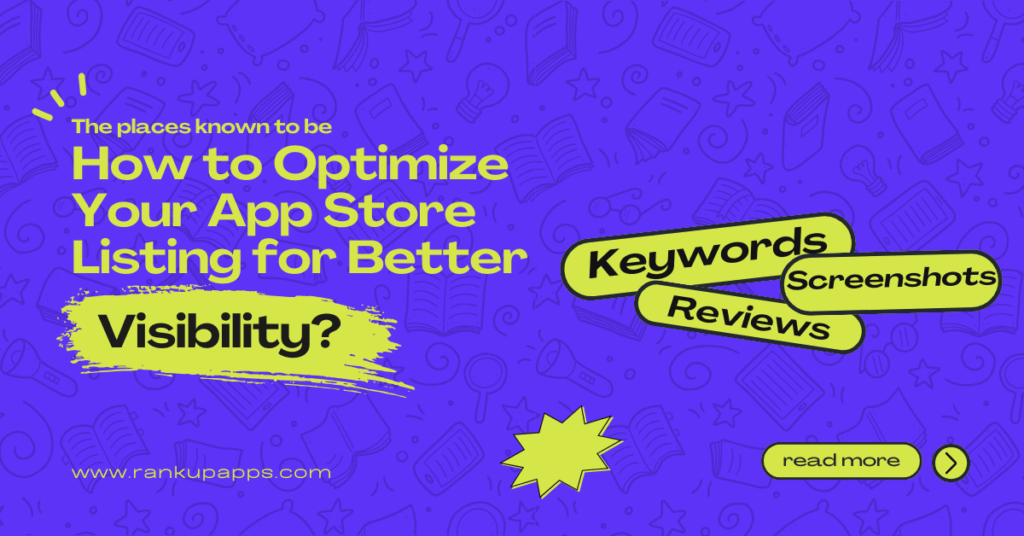The world of mobile advertising is evolving, with demand for more efficient, targeted campaigns rising by the day. As businesses fight to capture consumers’ attention on their mobile devices, one tool stands out for its effectiveness: Demand-Side Platforms (DSP) for mobile advertising. But what exactly does DSP mobile advertising entail, and how can it boost your business’s bottom line? Let’s dive into the details of this powerful advertising tool.
The Importance of ROI in DSP Mobile Advertising
In any advertising campaign, ROI (Return on Investment) is paramount. DSP mobile advertising, with its precision-targeting capabilities, helps brands maximize ROI by focusing on reaching the right audience at the right time.
By leveraging real-time data and advanced algorithms, DSPs allow advertisers to optimize bidding strategies, refine audience segments, and monitor ad performance with unmatched granularity.
For mobile advertisers, ensuring a positive ROI means reducing wasted ad spend and increasing conversions, which is precisely what DSP mobile advertising aims to achieve. Through this streamlined approach, businesses can see clearer, more accurate returns on their marketing investments.
Key Benefits of DSP Mobile Advertising
- Precise Audience Targeting
DSPs offer advanced targeting options such as demographic, behavioral, geo-targeting, and interest-based targeting, ensuring your ads reach the most relevant users. - Real-Time Bidding and Flexibility
With real-time bidding (RTB), advertisers can adjust bids based on performance, ensuring better control over costs and ad placement. - Cross-Platform Reach
DSPs allow advertisers to run campaigns across multiple mobile platforms, including in-app, mobile web, and video ads, maximizing reach. - Cost Efficiency
By utilizing RTB and competitive bidding, DSPs ensure that you only pay for valuable impressions, improving the overall cost-effectiveness of your campaigns. - Data-Driven Insights
DSPs provide in-depth analytics and reporting tools to track the performance of your campaigns in real-time, enabling data-driven decision-making. - Automation and Optimization
Automated ad placements and optimizations based on user behaviour ensure better performance without constant manual intervention. - Access to Premium Inventory
DSPs connect advertisers to premium mobile ad inventory, giving them access to high-quality ad placements across top mobile apps and websites. - Better ROI Tracking
With DSPs, advertisers can track return on investment (ROI) more accurately by analyzing key metrics such as conversions, clicks, and impressions. - Scalability
DSPs allow advertisers to scale their campaigns up or down based on budget and performance, offering greater flexibility for campaigns of any size.
10.Improved User Experience
With targeted, relevant ads, DSP mobile advertising enhances user experience by delivering ads that match the interests and preferences of the audience.
How DSP Mobile Advertising Works?
At the heart of DSP mobile advertising is real-time bidding (RTB), where ad impressions are auctioned in milliseconds. When a mobile user opens an app or website, the DSP evaluates the available ad space and determines whether to bid for it based on the campaign’s objectives.
Using the data collected about the user such as location, behaviour, and previous interactions with the brand the DSP will decide whether this is the right time and place to serve an ad. If the bid is successful, the ad appears to the user almost immediately.
This process, though lightning-fast, relies on vast amounts of data and sophisticated algorithms to make informed decisions, resulting in an optimized ad experience for both the user and the advertiser.
Setting Up Your DSP Mobile Advertising Campaign
When it comes to DSP (Demand-Side Platform) mobile advertising, setting up a campaign can seem daunting at first. However, once you understand the key steps involved, the process becomes much more manageable. Whether you’re a seasoned marketer or just beginning to explore DSPs, setting up your campaign strategically will ensure that your mobile ads reach the right audience and drive desired results.
Below, we’ll walk you through a clear step-by-step guide to setting up your DSP mobile advertising campaign.
1. Define Your Campaign Objectives
Before you dive into any technical details, it’s essential to establish clear and measurable objectives for your campaign. What do you want to achieve? Some common goals for mobile advertising campaigns include:
- Brand awareness: Reaching a broad audience and generating interest.
- Lead generation: Capturing user information for follow-up.
- App installs: Encouraging users to download your app.
- Sales conversions: Driving purchases or sign-ups.
Defining these objectives upfront will help guide the rest of the setup process and ensure you’re focusing on the right metrics.
2. Identify Your Target Audience
Audience targeting is one of the most powerful features of DSP mobile advertising. However, it’s crucial to define who your target audience is to ensure that your ads are shown to the most relevant people.
Consider these factors when identifying your audience:
- Demographics: Age, gender, income, education, etc.
- Geography: Country, region, or even specific cities.
- Behaviour: Device usage, purchase behaviour, app usage, etc.
- Interest: Affinity for specific topics or activities.
Your DSP platform will allow you to set targeting parameters based on these factors. The more refined your targeting, the more effective your campaign will be. Geo-targeting and behavioural targeting are often the most effective for mobile ads, as they ensure that your ads reach users who are most likely to take action.
3. Select the Right Ad Format
Once your audience is defined, it’s time to decide on the best ad format to use. Different formats can help achieve different objectives:
- Display Ads: Static or animated images that appear within apps or websites. Great for brand awareness and remarketing.
- Video Ads: Short, engaging video clips that play within apps. These are effective for driving app installs or increasing engagement.
- Native Ads: Ads that blend into the content of the app or website, making them less intrusive. They tend to have higher engagement rates because they feel more organic.
- Interstitial Ads: Full-screen ads that appear at natural transition points in an app or website. These are great for driving user actions like app installs or sign-ups.
Choosing the right format depends on your campaign’s goal, the platform you are advertising on, and the type of user experience you want to create.
4. Set Your Budget and Bidding Strategy
DSP mobile advertising allows you to bid for ad space in real-time auctions, so your budget and bidding strategy are crucial factors in determining how much you’ll spend and how competitive your campaign will be. There are two primary bidding options to consider:
- CPC (Cost Per Click): You pay when a user clicks on your ad. This is ideal for campaigns focused on driving traffic.
- CPM (Cost Per Thousand Impressions): You pay based on the number of times your ad is shown. This is suitable for awareness campaigns.
- CPI (Cost Per Install): For app install campaigns, this model charges when a user installs your app after clicking on the ad.
- CPA (Cost Per Acquisition): You pay only when a user completes a specific action, such as making a purchase or signing up for a service.
Set a budget that aligns with your campaign objectives and adjust your bidding strategy accordingly. Remember, flexibility is important, as real-time bidding may require you to tweak your bids based on performance.
5. Choose the Right DSP Platform
Selecting the right DSP platform is key to your campaign’s success. There are several DSPs available, each offering different features, targeting options, and inventory. When evaluating DSP platforms, consider the following:
- Inventory: Does the DSP provide access to high-quality mobile ad inventory, including in-app, display, and video ads?
- Targeting Capabilities: Does the DSP offer advanced targeting options, such as geo-targeting, behavioural targeting, or lookalike audience targeting?
- Analytics and Reporting: Does the platform provide detailed insights into your campaign performance? Real-time reporting is crucial for optimization.
- Integrations: Make sure the DSP integrates with your existing marketing tools, including analytics, CRM, and creative management platforms.
Popular DSP platforms include The Trade Desk, Google DV360, AdRoll, and MediaMath. Ensure that the DSP you choose fits your campaign goals and is easy to use.
6. Create and Upload Your Creative Assets
Once you’ve chosen your ad format, you’ll need to create the actual ad creatives. Whether you’re using static images, videos, or interactive elements, ensure that your creatives align with your campaign objectives and target audience. High-quality, engaging creatives are key to driving better performance.
Keep these tips in mind for your ad creatives:
- For video ads: Keep them short (15-30 seconds), engaging, and to the point.
- For display ads: Make sure they’re visually appealing, with a clear call-to-action (CTA).
- For native ads: Ensure the design complements the app or site’s aesthetic to avoid appearing overly promotional.
Most DSP platforms will allow you to upload your creative assets directly into the platform and preview them before launch.
7. Track, Monitor, and Optimize Your Campaign
Once your DSP mobile advertising campaign is live, it’s crucial to track and monitor its performance closely. Most DSPs provide detailed analytics dashboards that offer insights into metrics like impressions, clicks, conversions, CPC, CPA, and ROI.
Track the following metrics:
- Click-through rate (CTR): Measures how effective your ad is at encouraging users to click.
- Conversion rate: Tracks the percentage of users who take the desired action (e.g., install an app, make a purchase).
- Return on Investment (ROI): Calculates the profitability of your campaign.
Use this data to optimize your campaign. If certain ads or audience segments are underperforming, adjust your targeting, bids, or creatives accordingly. Real-time optimization is essential for achieving the best results.
8. Test, Learn, and Refine
DSP mobile advertising is not a set-it-and-forget-it process. It’s an ongoing journey of testing, learning, and refinement. Conduct A/B tests on different elements of your campaign, including ad creatives, targeting, and bidding strategies. Use the data to improve and make informed decisions about future campaigns.
Best Practices for Maximizing ROI in DSP Mobile Advertising
To get the most out of your DSP mobile advertising campaigns, consider these best practices:
- Audience Segmentation: Don’t lump all users into one broad category. Break them into smaller, more defined groups for hyper-targeted campaigns. Leverage data such as device type, app usage, and in-app behaviour for precise targeting.
- Creative Optimization: Mobile users are often on-the-go, so your ads must grab attention quickly. Make sure your creatives are optimized for mobile screens and feature clear calls-to-action.
- Testing and Iteration: A/B test your ads to find the most effective creatives, formats, and messaging. Use the data gathered to iterate and optimize continuously.
- Geotargeting: With mobile devices, location-based targeting is a game changer. Deliver personalized offers or messages based on the user’s current location to increase relevance and engagement.
- Optimize for App Store Visibility: If you’re promoting a mobile app, ensure your ads are optimized to drive installs directly from the app store. Include app-related keywords in your creatives and landing pages.
Measuring Success: Key Metrics for DSP Mobile Advertising
To assess the performance of your DSP mobile advertising campaigns, keep an eye on the following key metrics:
- Impressions: The total number of times your ad is displayed. This metric gives insight into how much visibility your campaign is gaining.
- Click-Through Rate (CTR): A high CTR indicates that your ad is engaging the audience effectively. It’s calculated by dividing the number of clicks by the number of impressions.
- Conversion Rate: This shows how many users took the desired action after interacting with your ad, such as downloading an app, making a purchase, or signing up for a service.
- Cost Per Acquisition (CPA): This metric helps you understand how much it costs to acquire a customer. It’s calculated by dividing the total campaign cost by the number of conversions.
- Return on Ad Spend (ROAS): A crucial metric that compares the revenue generated by your campaign to the amount spent on it. A high ROAS indicates a highly successful campaign.
Common Challenges in DSP Mobile Advertising and How to Overcome Them?
Demand-Side Platform (DSP) mobile advertising is one of the most powerful tools available to marketers today, but like any advertising model, it comes with its set of challenges. Advertisers must navigate a complex ecosystem of data, audience segmentation, creative optimization, and bidding strategies to make the most of DSP technology.
Below, we will explore the most common challenges faced by marketers in this space and offer practical solutions to overcome them.
1. Ad Fraud: A Growing Concern
Challenge: Ad fraud remains one of the most significant concerns for advertisers using DSP mobile advertising. Fraudulent activities, such as click fraud or impression fraud, can result in wasted ad spend. Fraudsters often generate fake clicks or impressions, leading to inflated metrics and ultimately skewing campaign results.
Solution: To mitigate ad fraud, it’s crucial to choose a DSP platform with built-in fraud detection and prevention tools. Look for DSPs that offer features like verification services and work with trusted third-party organizations like Double Verify or Moat to ensure that impressions and clicks are legitimate. Additionally, monitor your campaigns regularly and flag suspicious patterns such as sudden spikes in clicks or unusually high conversion rates from certain geographies or devices.
2. Audience Targeting Difficulties
Challenge: Effective audience targeting is at the core of any successful DSP mobile advertising campaign, but it can be challenging to segment audiences correctly. Marketers often struggle with defining and reaching the right target audience due to the sheer volume of data available. The wrong targeting strategy can lead to wasted ad spend and suboptimal campaign performance.
Solution: To overcome this challenge, it’s essential to continuously refine your audience segmentation strategy. Leverage all available data demographic, behavioural, and contextual to define your audience segments precisely. Many DSPs offer advanced targeting options, such as geo-targeting, retargeting, and lookalike audience targeting, so make sure you take advantage of these features. Dynamic creative optimization (DCO) also helps in tailoring your ads to specific audience profiles in real-time, ensuring greater relevance.
3. Creative Fatigue
Challenge: In mobile advertising, audiences are bombarded with multiple ads every day. Over time, the same creative may lose its impact, leading to creative fatigue, a phenomenon where ads no longer grab the audience’s attention or elicit the desired response. Creative fatigue can cause CTR (Click-Through Rate) to decline and ultimately result in poor campaign performance.
Solution: To combat creative fatigue, it’s vital to regularly refresh your ad creatives. Experiment with different formats: static images, videos, carousels and change up the messaging to keep things interesting. A/B testing can be an effective way to identify which creatives resonate most with your audience. Additionally, by segmenting your audience, you can tailor creatives to different groups, ensuring relevance and engagement.
4. Data Overload and Interpretation
Challenge: DSPs offer a wealth of data, but this can quickly become overwhelming. Marketers often face challenges when trying to interpret vast amounts of data from multiple sources, making it difficult to derive actionable insights and optimize campaigns in real-time.
Solution: The key to handling data overload is adopting a data-driven decision-making approach. Focus on a few key performance indicators (KPIs) such as CTR, conversion rate, ROI, and Cost Per Acquisition (CPA). Use data visualization tools that help simplify complex datasets and make it easier to identify trends and patterns. Additionally, DSPs often offer automated optimization features, which can be incredibly useful in reducing the need for manual intervention.
5. High Competition and Bidding Wars
Challenge: One of the central features of DSP mobile advertising is real-time bidding (RTB), where ad inventory is auctioned off in milliseconds. However, the high competition for certain ad slots can lead to bidding wars, which increases the cost of impressions and reduces the overall ROI for advertisers.
Solution: To handle bidding competition effectively, focus on improving your bidding strategy. Cost-per-click (CPC) or cost-per-impression (CPM) models can be optimized by using smart bidding strategies, which take into account factors like device, location, and time of day to automatically adjust bids for better results. Additionally, DSPs with machine learning capabilities can help optimize bidding in real-time, ensuring that you’re not overpaying for valuable impressions.
6. Cross-Device Tracking Challenges
Challenge: In the mobile advertising ecosystem, users frequently switch between devices smartphones, tablets, desktops, etc. Cross-device tracking becomes essential for attributing conversions to the correct ad interactions. Without proper tracking, it’s difficult to understand the full user journey, leading to inaccurate attribution and performance reporting.
Solution: Implement cross-device tracking technologies such as device graphing and ID syncing to track user activity across all devices. Many DSPs offer built-in cross-device tracking solutions, allowing advertisers to track and optimize campaigns based on a single user’s journey across different devices. Ensure that you’re using tracking pixels and tags correctly and integrate them with your CRM or analytics platforms for seamless data flow.
7. Lack of Transparency
Challenge: Transparency in mobile advertising has been a longstanding issue, particularly with the opacity in pricing and bid decisions made by DSPs. Advertisers are often left in the dark about how their budgets are being spent and whether they are getting fair value for their ad placements.
Solution: Choose a DSP that offers full transparency regarding its pricing models, bidding strategies, and data usage. Look for platforms that provide clear reports on campaign performance, including insights into inventory sources and detailed breakdowns of costs and results. This transparency will not only give you greater control over your campaign but also help you optimize it effectively.
8. Ad Blocking and User Privacy Concerns
Challenge: With the growing prevalence of ad blockers and increasing concerns about user privacy, marketers are facing hurdles in getting their ads delivered. Many users actively block ads on mobile devices, while stringent regulations like GDPR in Europe and CCPA in California require businesses to adhere to privacy standards, limiting the amount of data that can be used for targeting.
Solution: To overcome ad blocking, it’s essential to create non-intrusive, value-driven ads that provide users with meaningful content. Focus on native ads and in-app advertisements, which blend seamlessly with the user experience. To address privacy concerns, make sure your campaigns comply with relevant privacy regulations by using privacy-focused DSP platforms and adopting first-party data strategies.
Future Trends in DSP Mobile Advertising
The future of DSP mobile advertising looks bright, with several emerging trends shaping the landscape. One of the most exciting developments is the integration of artificial intelligence (AI) into DSP platforms, which can predict user behaviour and optimize bids in real-time.
Additionally, programmatic audio and video ads are gaining traction, providing new opportunities for advertisers to engage mobile users through different media formats. Lastly, 5G technology promises to accelerate mobile advertising by enabling faster ad delivery and richer ad formats, such as high-definition video.
Conclusion
DSP mobile advertising is no longer just a trend, it’s a powerful tool that businesses can use to enhance their mobile marketing efforts. By optimizing campaigns for targeting, creatives, and metrics, brands can unlock significant ROI and build long-term customer relationships.
As technology evolves and new trends emerge, the potential for DSP advertising to deliver even greater results only increases. Start refining your strategy today to ensure that your brand stays ahead in this competitive and ever-evolving landscape.



